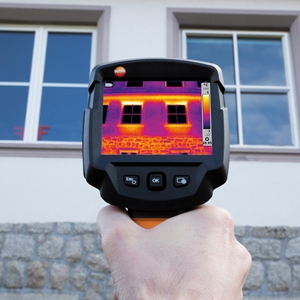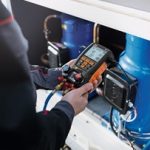It is easy to describe the responsibilities that employees have to keep their workers safe, but in many cases is a difficult concept to specifically carry out on a premises. While it is important to have occupational health and safety OHS standards in place, it will ultimately be up to managers and employees themselves to ensure policies are adhered to.
According to 2010/2011 Safe Work Australia data, there were 120,155 injury claims by employees under the Australian Workers’ Compensation scheme. While some of these incidents would be simple accidents, it does highlight the need to safeguard your workers from risk.
Many workplace dangers surround common hazards such as electricity, heat, moving machinery and large objects. To manage these risks, one idea is to incorporate devices such as thermal imagers to eliminate the need for employees to touch or get close to the hazards. This way, problems can be viewed from a distance and decisions can then be made as to what to do next.
Here are three ways that thermal imagers can promote safety in the workplace:
1) Analysing power generators and electricity lines
Employees around electricity and power generations are always at risk and must adhere to OHS policies when working around them. However, when it comes to maintenance, workers have to inspect problems up close and in detail.
As temperature changes are linked to wear and fatigue on electrical materials, it then makes sense to use a thermal imaging device. This means that the process can be completed at distance where workers can be safe from sparks and other hazards.
This can also be completed without switching off high-voltage systems and reducing energy distribution at the plant.
2) Identifying building problems
Employees searching for thermal bridges or heat leakages may have to knock down walls to get to the problem. Potentially, this cause damage to electrical wires, water pipes and structural bearings and become a risk to workers in the vicinity.
However, with the assistance of a thermal imager, locations can be scoped out and hazards displayed before a sledge hammer is swung. This will ensure there are no surprises on the other side of the wall when workers break through to fix the issue.
3) Maintaining large machinery
Servicing large machinery is dangerous for two reasons. Firstly, there are a number of moving parts and workers could become trapped and secondly, the amount of heat radiating off different parts of the machine can be a safety issue to operators and maintenance crews.
Using a thermal imaging camera, workers will be able to identify the condition of the machinery prior to the commencement of any rectification or maintenance.









 Reduce cooking oil costs while ensuring quality
Reduce cooking oil costs while ensuring quality Expert knowledge on CO2 monitoring
Expert knowledge on CO2 monitoring Refrigeration knowledge - in 3 modules
Refrigeration knowledge - in 3 modules



